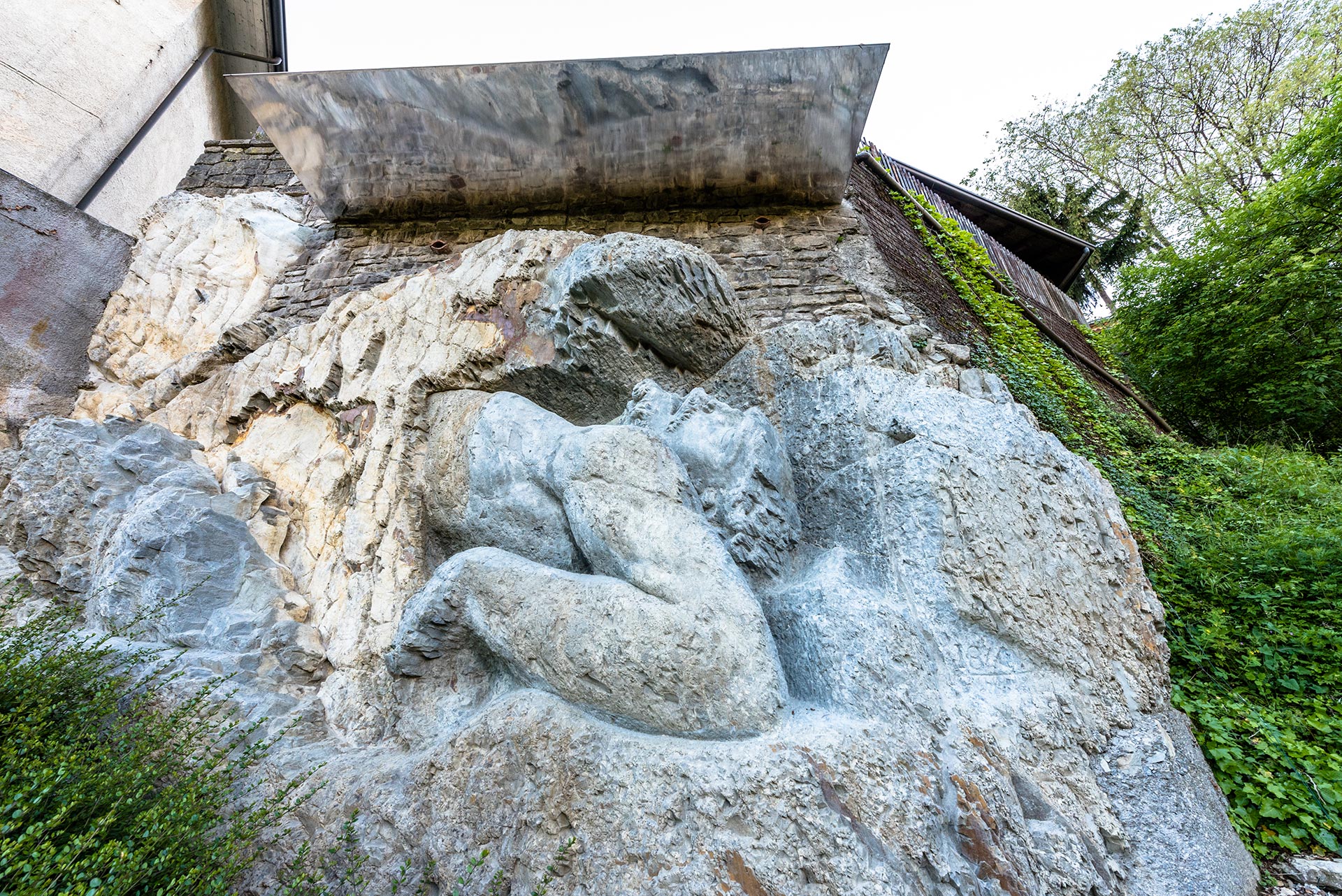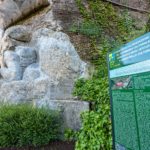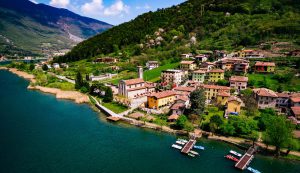Sculpted by Giosuè Meli in the 19th century, the Giant of the Mountain is a mysterious sculpture set in the green Val Cavallina, the silent guardian of an uncontaminated nature.
According to popular tradition, the large man emerging from the rock is a Giant supporting the mountain, while according to others, the work depicts a deposition of Christ. Every person standing in front of this colossal sculpture has their version, but there is no definitive answer.
The author’s interpretation, Giosuè Meli, remains hidden. We only know that in 1841, along the steps of Via Costa in Luzzana, the artist sculpted the mammoth human figure when he was still a young student at the Accademia Carrara, to prove to himself that he knew how to sculpt Michelangelo’s anti-Classical gigantism and that of Gianbologna’s “Bella maniera”. Meli would later land in neoclassical Rome, where he would acquire fame and recognition.
His sculpture, set in nature, can be seen along the Bragazzo stream, before it flows into the Cherio, along a steep slope above the valley of water, where there are small lakes that form beautiful cascades of clear water.
In 2012, the Parco del Gigante (Giant’s Park) was created around the sculpture. It traces a pedestrian path through a network of footbridges and routes along the stream, offering numerous vantage points from which to admire the unspoilt natural surroundings. The platform in front of the Giant presents a spectacular view of the sculpture and its surroundings.
Near the park, with its ancient medieval village, Luzzana is home to numerous sculptures by the artist Meli, most of which are guarded within the castle’s walls. Among his masterpieces, one can find hints of the great rock figure, which has watched over the entire valley for almost two centuries.
This site is enhanced by the Cultural Association Il Gigante of Luzzana.










